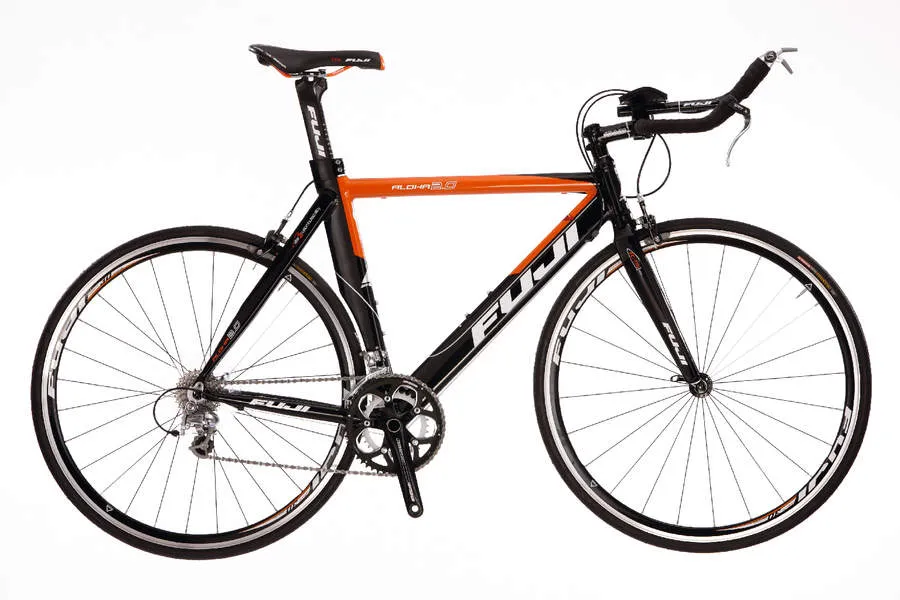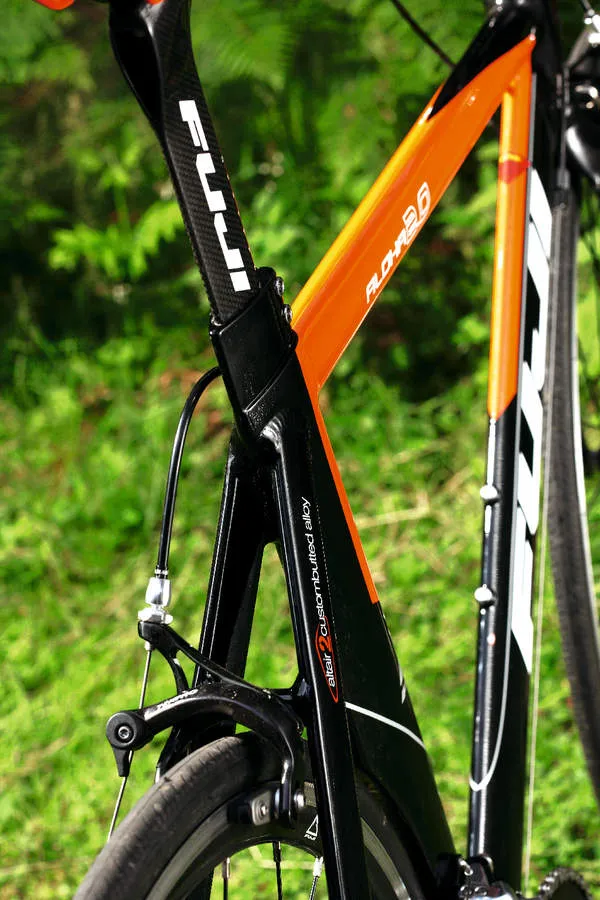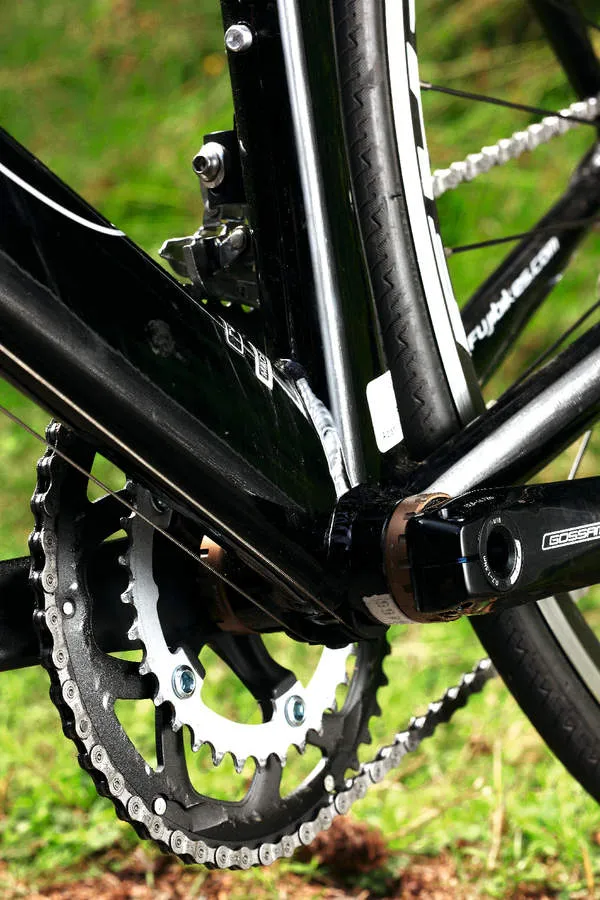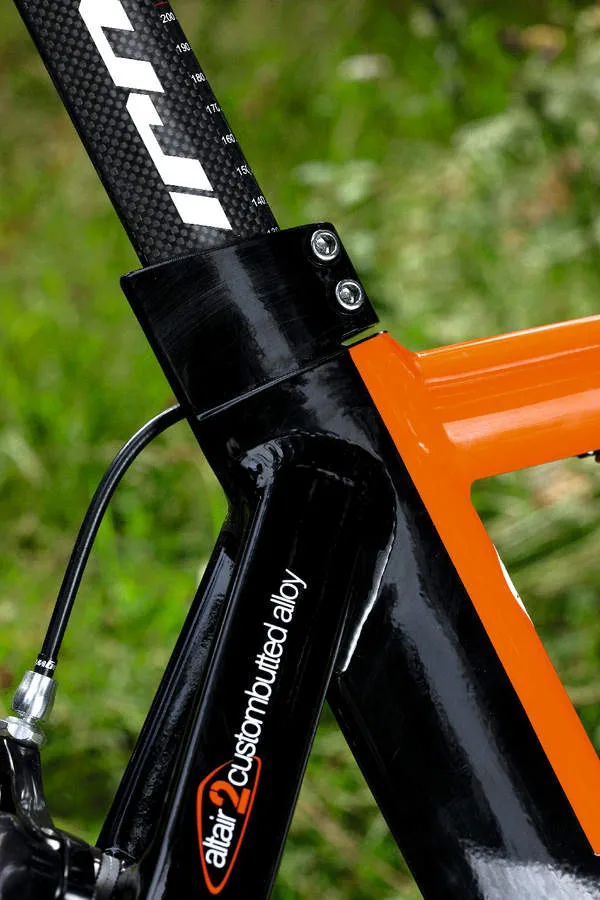Fuji's Aloha is a great-value entry into the world of time trials or triathlon, offering aero bike positioning and performance for under £1,000.
Ride & handling: Proper TT/tri geometry sets up an efficient aero tuck position
The fact we were immediately thinking of upgrades to the ride rather than excuses not to ride is a real recommendation of the Fuji. To elaborate, most cheaper aluminium alloy frames with big aero tubes rattle our teeth out, but the Aloha was a far more forgiving ride than we expected.
There is some slow-speed harshness and it still clanks over bigger potholes, but once you’ve got it up to speed the triple-butted tubes screen out a lot of fatigue-inducing vibration.
There’s no long-ride numbness and while it can kick about out of the saddle on steep hills, there’s nothing to interrupt your rhythm when spinning on the flat. The long, slightly flexy cowhorn base bar hand position and well-padded soft-nosed saddle add welcome cushioning to longer cruise sessions too.
The ‘proper’ time trial/triathlon geometry is immediately obvious in the way the steep seat tube pushes you forward, opening up the angle between belly and legs. This translates into a less cramped, more comfortable ‘aero tuck’ position that allows for easier breathing.
Once you’re used to the position, the steering geometry is relaxed enough to let you keep tucked through corners and down well-sighted descents rather than forcing you back on to the cowhorns out of fear. Again, that translates into more speed more of the time.
The more we rode the good-looking orange and black Aloha, the more it impressed us. If you do have to grab the anchors, the fact Fuji have specced proper metal-shoe cartridge brake pads makes a big difference in control to the all-rubber pads we’d expect at this price.
Given that it’s likely to be bought by less experienced, less powerful riders, the compact 50/34T chainset ratio is a good spec choice too. You’ll regularly see the narrow end of the block once the easy aero position, profiled tubes and any wind or gradient assistance all sync together, but we rarely span out, however rapidly we rode.
The lower ratios mean you can stay settled and spinning efficiently in the saddle for far longer than with a conventional 53/39 chainring. Lower leverage ratios also mean the slight flex of the triple-butted tubes is less obvious and they offset the inevitable higher weight of the aero frame and fixtures compared to a conventional road bike too.
Frame & equipment: Triple-butted alloy frame is forgiving and fun; we'd upgrade the heavy wheels
Most budget aero bikes are essentially road-bike-shaped frames with a few flattened tubes to look the part. Not the Aloha though. The deep fin down tube, wheelhugger seat tube and teardrop stays smooth airflow over the frame, and the carbon fork legs are aero profiled too.
Weight is competitive for an aero frame at this cost and lighter than some carbon frames we’ve tested. External cabling is to be expected at this price, but cable bumpers keep paintwork protected. A 12cm head tube means a low cockpit once you’ve switched the spacers around.
A neat aero section carbon seatpost gives plenty of height adjustment. Significantly, the Aloha is one of the few cheaper aero bikes to use steep seat-angled geometry too, so you can get into an efficient aero position.
The kit you get is also very well thought out. Shimano 105 gears clicking through extension-mounted tip shifters and a compact FSA chainset keep cadence fast and efficient. Comfortable levers and metal-backed brake pads make a big difference to stopping performance, and basic but well-shaped tri bars and a really good saddle make a massive difference to comfort.
While the semi-aero Fuji wheels look the part and get two white “finder” spokes bracketing the valve for fast puncture repair, a lighter set of wheels would be the first thing on our upgrade list. While the Kenda tyres roll okay, they’re not the smoothest- feeling or most puncture-proof.





